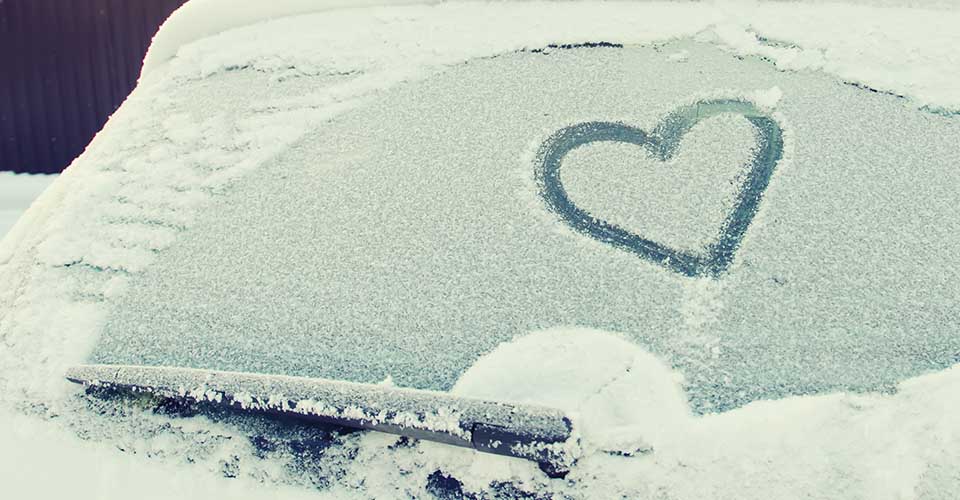- Car finance Car finance
- Motorbike finance Motorbike finance
- Van finance Van finance
- How it works How it works
- FAQs and guides FAQs and guides
- About us About us
- Home
- Blog
- Looking After Your Vehicle
- How to prepare your car for winter
How to prepare your car for winter
Updated: Tuesday, 25 October 2022
As the winter months are fast approaching, we would advise you check your vehicle is ready to tackle the cold by preparing your car for winter. You can take your car or van for a service but we understand this can be a little pricey, especially in the months leading up to Christmas! To help you travel safely when driving in the snow and ice, we’ve listed the top car care tips to keep you moving this winter. This advice also applies to other vehicles and can help you to keep driving your van safely too.
As the winter months are fast approaching, we would advise you check your vehicle is ready to tackle the cold, by preparing it for winter. You can take your car or van for a service but we understand this can be a little pricey, especially in the months leading up to Christmas! To help you travel safely on a better road ahead, we’ve listed the top car care tips to keep you moving this winter. This advice also applies to other vehicles and can help you to keep driving your van safely too.
1. Make sure all of your lights are working
There are so many lights on the average vehicle and although it’s part of general car care to ensure they are working, it’s even more important that they are working in the winter. With dark mornings and evenings, you will need to get these checked.
1. Make sure all of your lights are working
There are so many lights on the average vehicle and although it’s part of general car care to ensure they are working, it’s even more important that they are working in the winter. With dark mornings and evenings, you will need to get these checked.
2. Make sure your windows are always clean
It’s always important to be able to see clearly, but even more so in the winter. A good tip is to always keep a bottle of ready-to-use screen wash in your vehicle, in case you ever run out on the move. We would also suggest keeping on top of washing your windscreen, as it’s important not to just rely on your screen wash to be able to see clearly.
As the colder nights also draw in, you could consider covering the car in winter to save you having to de-ice your car before rushing off to work in the morning. Although some may think pouring boiling water on your windscreen is the best way to get rid of ice quickly, this is in fact a common mistake. Stay away from pouring boiling water on your windscreen as this can cause the glass to crack, due to the quick change in temperature.

2. Make sure your windows are always clean
It’s always important to be able to see clearly, but even more so in the winter. A good tip is to always keep a bottle of ready-to-use screen wash in your vehicle, in case you ever run out on the move. We would also suggest keeping on top of washing your windscreen, as it’s important not to just rely on your screen wash to be able to see clearly.
As the colder nights also draw in, you could consider covering the car in winter to save you having to de-ice your car before rushing off to work in the morning. Although some may think pouring boiling water on your windscreen is the best way to get rid of ice quickly, this is in fact a common mistake. Stay away from pouring boiling water on your windscreen as this can cause the glass to crack, due to the quick change in temperature.

3. Check your tyres
Checking your tyre pressure and tread is an important all round vehicle care tip, but even more so on the icy roads that come with the winter. We would suggest you check your tyre pressure regularly, around every 2 weeks, as tyres can quickly become deflated. The pressure that your tyres need to be will be in your vehicle’s handbook or on a sticker somewhere visible in your car. If you can’t find it, try using a Tyre Pressure Search tool.
You will also need to check the tread on your tyres which can sometimes be quite difficult without a special gauge. However, you can use a 20 pence piece as shown in this video. If you can see the edge of the piece, then you will need to get your tyres changed as soon as possible.
If your tyre pressure is low or your tread has worn away, then your tyres are not fit for purpose and they will struggle to grip the road, especially in the snow, ice or rain.
3. Check your tyres
Checking your tyre pressure and tread is an important all round vehicle care tip, but even more so on the icy roads that come with the winter. We would suggest you check your tyre pressure regularly, around every 2 weeks, as tyres can quickly become deflated. The pressure that your tyres need to be will be in your vehicle’s handbook or on a sticker somewhere visible in your car. If you can’t find it, try using a Tyre Pressure Search tool.
You will also need to check the tread on your tyres which can sometimes be quite difficult without a special gauge. However, you can use a 20 pence piece as shown in this video. If you can see the edge of the piece, then you will need to get your tyres changed as soon as possible.
If your tyre pressure is low or your tread has worn away, then your tyres are not fit for purpose and they will struggle to grip the road, especially in the snow, ice or rain.
4. Give your car a proper check
This is the stuff that might be slightly more tricky if you aren’t mechanically minded. If you want to give your car a proper check to see if it’s fit for the winter, then we would advise a service from a mechanic. This is a tip for all drivers no matter the weather, but please don’t ignore your car warning lights.
A mechanic may look at things you might be able to do yourself, like check the battery and fluid levels of your car, but they can also check your brake pads, brake discs and brake fluid, which normally only a mechanic can check.
5. Check fluid levels
It’s important to do this all year round, but even more so in the winter when the cold can affect how your car operates. Make sure to top up the coolant, this normally needs doing every 2-3 years. If you are unsure take it to a garage to make sure you are doing it correctly.
You should also check your car oil, to make sure that your engine has enough oil in it to operate, as without it you could cause a large mechanical issue in the engine.

4. Give your car a proper check
This is the stuff that might be slightly more tricky if you aren’t mechanically minded. If you want to give your car a proper check to see if it’s fit for the winter, then we would advise a service from a mechanic. This is a tip for all drivers no matter the weather, but please don’t ignore your car warning lights.
A mechanic may look at things you might be able to do yourself, like check the battery and fluid levels of your car, but they can also check your brake pads, brake discs and brake fluid, which normally only a mechanic can check.
5. Check fluid levels
It’s important to do this all year round, but even more so in the winter when the cold can affect how your car operates. Make sure to top up the coolant, this normally needs doing every 2-3 years. If you are unsure take it to a garage to make sure you are doing it correctly.
You should also check your car oil, to make sure that your engine has enough oil in it to operate, as without it you could cause a large mechanical issue in the engine.

6. Check the battery
It’s more important than ever in the winter to check that your battery is in full working order. Mostly because you use it a lot more in the winter to heat your car as well as using your lights more, but also because car batteries produce less electricity in the cold which can make it more difficult to start.
You can check your battery by making sure the battery terminals are tight and have not corroded. You can also be kind to your battery by not turning on your lights or heaters until the engine is running to make sure it starts ok.
6. Check the battery
It’s more important than ever in the winter to check that your battery is in full working order. Mostly because you use it a lot more in the winter to heat your car as well as using your lights more, but also because car batteries produce less electricity in the cold which can make it more difficult to start.
You can check your battery by making sure the battery terminals are tight and have not corroded. You can also be kind to your battery by not turning on your lights or heaters until the engine is running to make sure it starts ok.
7. Carry an emergency kit
One thing you may not have thought of is a winter emergency car kit. This is perfect for if your car breaks down in the cold, snow or ice (hopefully not all 3 at once!). We would suggest including items such as a shovel, torch, blanket, hi-visibility vest, screen wash, snacks, some water, de-icer and scraper. Pack a battery pack as well in case your phone runs out of battery, we wouldn’t want you to be left stranded in the cold.
7. Carry an emergency kit
One thing you may not have thought of is a winter emergency car kit. This is perfect for if your car breaks down in the cold, snow or ice (hopefully not all 3 at once!). We would suggest including items such as a shovel, torch, blanket, hi-visibility vest, screen wash, snacks, some water, de-icer and scraper. Pack a battery pack as well in case your phone runs out of battery, we wouldn’t want you to be left stranded in the cold.
8. Prepare for longer journeys
Winter can throw some curveballs when it comes to driving. The days are shorter and darker, and the roads can become dangerous with ice and snow.
Bare this in mind when preparing for a longer journey by giving yourself plenty of time to get to your destination. We’d also advise always checking the weather along your journey as well as what the traffic looks like. Always, whether in the winter or not, make sure you have enough fuel and stick to the major roads, where possible, if the journey is looking like ice and snow.
It’s also a good idea to know how to start a car in the cold. Which you can do by just giving it more time to start, around 10 seconds, and by making sure it’s looked after by following everything in this article. Including most importantly checking the health of your battery.
9. Drive thoughtfully and carefully
Whenever the weather starts to become a little more difficult to drive in, you need to start considering your route and whether it has been gritted. Icy road conditions can be very dangerous, so you should always consider your breaking distance. Why not consider leaving 5 minutes earlier to ensure you’re not rushing?
Hopefully these tips will help you move forward on a better road ahead this winter.

8. Prepare for longer journeys
Winter can throw some curveballs when it comes to driving. The days are shorter and darker, and the roads can become dangerous with ice and snow.
Bare this in mind when preparing for a longer journey by giving yourself plenty of time to get to your destination. We’d also advise always checking the weather along your journey as well as what the traffic looks like. Always, whether in the winter or not, make sure you have enough fuel and stick to the major roads, where possible, if the journey is looking like ice and snow.
It’s also a good idea to know how to start a car in the cold. Which you can do by just giving it more time to start, around 10 seconds, and by making sure it’s looked after by following everything in this article. Including most importantly checking the health of your battery.
9. Drive thoughtfully and carefully
Whenever the weather starts to become a little more difficult to drive in, you need to start considering your route and whether it has been gritted. Icy road conditions can be very dangerous, so you should always consider your breaking distance. Why not consider leaving 5 minutes earlier to ensure you’re not rushing?
Hopefully these tips will help you move forward on a better road ahead this winter.

10. Check your breakdown cover
Make sure you know what is covered in your breakdown cover. For example, do you have breakdown cover should you break down from home, or like most, do you have breakdown cover if you are away from home.
Whatever cover you have, make sure you have all the relevant information to hand should you break down. We’d advise to save the relevant number into your phone, but to also keep a copy of all the information in your glovebox, just in case.
10. Check your breakdown cover
Make sure you know what is covered in your breakdown cover. For example, do you have breakdown cover should you break down from home, or like most, do you have breakdown cover if you are away from home.
Whatever cover you have, make sure you have all the relevant information to hand should you break down. We’d advise to save the relevant number into your phone, but to also keep a copy of all the information in your glovebox, just in case.
11. Make sure the car is serviced
You should always get your car serviced regularly, but if you do a lot of driving in the winter, then perhaps you could think about getting it serviced just before the colder months arrive.
Different car services can include different things, but a winter car check or a winter service can include most things covered in this article. They will check your tyre pressure and tread, the functionality of your battery, that the coolant and anti-freeze are topped up, and that your windscreen wipers, lights and oil are all as they should be.
This should take away some of the stress of breaking down and will make sure you’re aware of what you should do if your car breaks down.
11. Make sure the car is serviced
You should always get your car serviced regularly, but if you do a lot of driving in the winter, then perhaps you could think about getting it serviced just before the colder months arrive.
Different car services can include different things, but a winter car check or a winter service can include most things covered in this article. They will check your tyre pressure and tread, the functionality of your battery, that the coolant and anti-freeze are topped up, and that your windscreen wipers, lights and oil are all as they should be.
This should take away some of the stress of breaking down and will make sure you’re aware of what you should do if your car breaks down.
Bringing you tips on buying and maintaining your vehicle to make life on the road less stressful.
More from Moneybarn...
For a better road ahead
Moneybarn is a member of the Finance and Leasing Association, the official trade organisation of the motor finance industry. The FLA promotes best practice in the motor finance industry for lending and leasing to consumers and businesses.
Moneybarn is the trading style of Moneybarn No. 1 Limited, a company registered in England and Wales with company number 04496573, and Moneybarn Limited, a company registered in England and Wales with company number 02766324. The registered address for these companies is: Athena House, Bedford Road, Petersfield, Hampshire, GU32 3LJ.
Moneybarn’s VAT registration number is 180 5559 52.
Moneybarn Limited is authorised and regulated by the Financial Conduct Authority (Financial Services reference No. 702781)
Moneybarn No. 1 Limited is authorised and regulated by the Financial Conduct Authority (Financial Services reference No. 702780)




